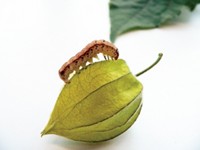Advertisement
Grab your lab coat. Let's get started
Welcome!
Welcome!
Create an account below to get 6 C&EN articles per month, receive newsletters and more - all free.
It seems this is your first time logging in online. Please enter the following information to continue.
As an ACS member you automatically get access to this site. All we need is few more details to create your reading experience.
Not you? Sign in with a different account.
Not you? Sign in with a different account.
ERROR 1
ERROR 1
ERROR 2
ERROR 2
ERROR 2
ERROR 2
ERROR 2
Password and Confirm password must match.
If you have an ACS member number, please enter it here so we can link this account to your membership. (optional)
ERROR 2
ACS values your privacy. By submitting your information, you are gaining access to C&EN and subscribing to our weekly newsletter. We use the information you provide to make your reading experience better, and we will never sell your data to third party members.
Environment
How mimicking a bee under attack can attract pollinators
Plant sends out honeybee chemical distress signals to recruit freeloading flies
by Matt Davenport
October 17, 2016
| A version of this story appeared in
Volume 94, Issue 41
Many species rely on a little chemical con artistry for survival, but an international research team has uncovered a particularly crafty sting involving deceitful plants, kleptoparasitic flies, and honeybees. In this ruse, the hustler is the South African parachute plant Ceropegia sandersonii and its mark is Desmometopa—the so-called freeloader fly—the plant’s primary pollinator. To lure in the flies, the plant appears to chemically mimic a staple of the Desmometopa diet: honeybees captured by spiders and other predators (Curr. Biol. 2016, DOI: 10.1016/j.cub.2016.07.085). As honeybees attempt to fend off their attackers, they secrete a cornucopia of volatile compounds from their stingers and glands, which theflies interpret as an invitation to dinner. Using GC/MS, researchers led by Stefan Dötterl of the University of Salzburg and Annemarie Heiduk of the University of Bayreuth found that 60% of the compounds emitted by distressed honeybees are also emitted by the plant. Furthermore,






Join the conversation
Contact the reporter
Submit a Letter to the Editor for publication
Engage with us on Twitter